Review: Jabra Stone
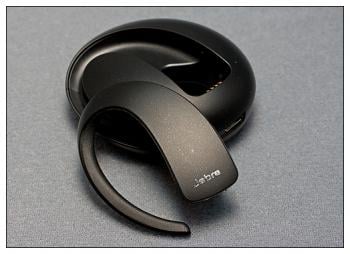
Jabra has been making headsets, wired and wireless, for a very long time. Every now and then they come up with a design or feature that really makes their headset stand out. The new Jabra Stone not only stands out among Bluetooth headsets -- in many ways it rises above them. The headset was officially released on Nov. 8, 2009, and currently is an exclusive through AT&T.
Its unique style is an eye-catcher, and Jabra does a good job with introducing new features to the Bluetooth headset market. While the Jabra Stone is in a way groundbreaking, does the performance match the innovations? Does style meet substance?
Ease on past the break to read more on the Jabra Stone to see if it's worth the trip to your local AT&T store.
The Stone Headset
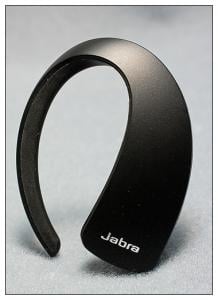
The first thought that came to mind when I first took the Jabra Stone out of its box was "cool." The headset is about 1.5 inches wide and just over 1.75 inches tall. The headset weighs .25 ounces. The matte black finish has just a hint of silver glitter, looks sharp and compliments the simple design very well. The headset comes packaged with a wall charger, USB cable to charge via your computer, belt hook, extra ear gel, user's manual and the charger.
The headset is "U" shaped, much like an ear hook from your typical Bluetooth headset, that loops over your ear with the speaker resting inside your ear. The speaker portion of the headset extends about half an inch and feels a lot like your typical ear bud speaker.
The headset has no external buttons but does have a call/answer button beneath the surface of the Jabra logo. This button is used to answer/end calls, redial numbers, mute or ignore calls and activate voice commands (device dependent). The button is a little awkward to use at first. You don't know if your pressing too hard to dislodge the headset or not hard enough to actuate the button. With a little use, the awkwardness fades.
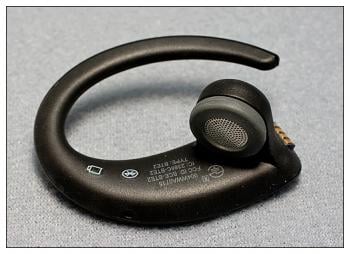
The headset's volume is controlled by sliding your finger up or down the face of the headset, just above the logo. A sensor rests just beneath the surface of the headset to register you finger movements.
All the latest news, reviews, and guides for Windows and Xbox diehards.
There is no power button. The headset turns on when you remove it from the charger base and turns off when you return it to the base. The Stone does go into a sleep mode when out of the base to conserve power.
The Stone Charger
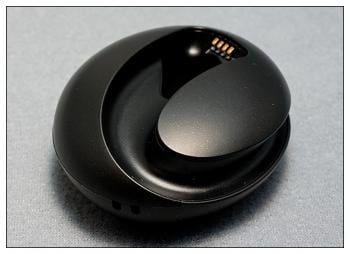
The design of the headset is only half of what makes the Jabra Stone unique. The headset is paired with a charging cradle/base. The charger weighs 67 ounces and measures 2.3x2x1 inches and with the headset in place, it feels and looks like a small stone.

The charger hooks up to a wall charger and will continue to charge the Stone when unplugged. It holds enough juice to fully re-charge the headset, extending the battery life tremendously. Jabra reports standby time for the headset and charger to be up to 12 days (2.5 days for the headset alone) and talk time to be up to 8 hours (up to 2 hours for the headset alone).
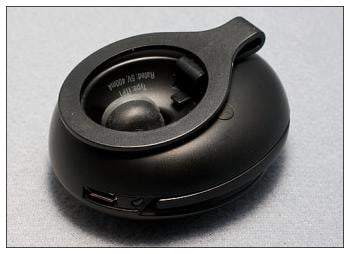
The Stone charger can be used with the included belt hook to increase portability. The clip is just large enough to fasten securely to a belt but not thick enough to get around a car visor (which would have been nice).
Performance
When you first get your Jabra Stone, you'll need to slide the headset into the charger and charge the two via the wall charger. Charging is complete when the red LED on the charger turns off (about two hours).
Once you remove the headset from the base, it automatically goes into pairing mode and will search for your phone. Once you put your phone into pairing mode, it's only a matter of seconds before the connection is established. Depending on your phone, you may be requested to enter the top secret code of "0000."
The Jabra Stone is fitted with dual microphones and "Noise Blackout Extreme" noise cancellation technology. Speaker sound and volume was really good and the dual microphones picked up my voice equally well. I could use a normal tone and volume and be heard clearly with the car stereo playing or traffic noise filtered out nicely from the background.
The volume slider was interesting to use and was very responsive to the touch. A tone sounds to confirm the volume changes. Calls are answered by a single press of the answer/call button as are the other headset actions.
Incoming calls are announced by tone when the headset is worn. While in the base, the headset is turned off but when your phone rings and you take the headset out of the base, the Stone connects in seconds with your phone. In using the Stone with the HTC Tilt 2, the headset connected within one ring of the call.
Voice commands responded very good in using the Stone with the Tilt 2. There were a few miscues but no more than any other headset would experience.
The headset is A2DP compatible so you can stream music to the headset. It can be paired with up to eight phones and connect to two phones at the same time.
Fit and feel
I've tested my fair share of Bluetooth headsets and have found the Jawbone and Blueant Q1 to be amongst the best performing and comfortable headsets available. The Jabra Stone matches these two headsets with regards to performance and blows them out of the water with regards to comfort.
If you are looking for a Bluetooth headset that you will forget you are wearing, look no further than the Jabra Stone. The Stone is light and comfortable enough that you hardly notice your wearing it. The only drawback to the fit may be that, by design, the Stone is a "right ear only" fit. There's no way to flip the speaker to accommodate lefties.
The fit is secure enough to handle routine daily activities and should hold up to light jogging/bicycling. However, with the convenience of the charging base, you can wear the unit on your belt/waist band and simply pop it out when needed. The Stone is not water proof or resistant.
One last observation on the fit and feel of the Jabra Stone is that it plays nice with eye glasses. Too many Bluetooth headsets don't play nice with eye glasses causing discomfort or a less secure fit. I wear glasses and the Jabra Stone is amongst the most comfortable headset I've used.
Overall Impression
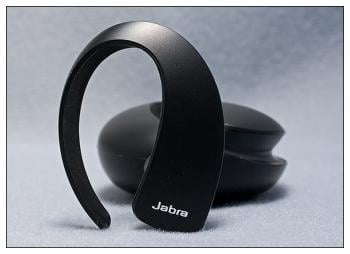
The Jabra Stone is easily one of the best Bluetooth headsets on the market today. It's unique but simple design makes it great for portability, longevity, and performance.
Call quality is among the best on the market and the charging base gives the Jabra Stone tremendous staying power. Having the ability to listen to your music files from your Windows phones is an added bonus. The Stone is priced at $129.99, which may seem a little pricey but consistent with other headsets with comparable features and performance.
For the time being it looks as if the Jabra Stone is an AT&T exclusive and can be on their website or at a AT&T Retail Store. There is some indication that the Stone may become available industry wide but in the meantime, regardless of your carrier, if you're looking for a light weight, comfortable to wear, quality Bluetooth headset it might be worth a visit to AT&T.

Phil is the father of two beautiful girls and is the Dad behind Modern Dad. Before that he spent seven years at the helm of Android Central. Before that he spent a decade in a newsroom of a two-time Pulitzer Prize-finalist newspaper. Before that — well, we don't talk much about those days. Subscribe to the Modern Dad newsletter!
